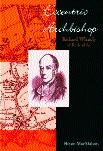Richard Whately: Ireland’s strangest archbishop?
Published in 18th–19th - Century History, Issue 2 (Mar/Apr 2005), News, News, Volume 13 Richard Whately was possibly the strangest archbishop Ireland has ever known. An eccentric Oxford professor of political economy, he was appointed Church of Ireland archbishop of Dublin in 1831 and remained in office until 1863. A new biography by Bryan MacMahon, Eccentric archbishop: Richard Whately of Redesdale, has just been published by the Kilmacud–Stillorgan Local History Society and was launched on 16 March 2005 in St Brigid’s Church, Stillorgan.
Richard Whately was possibly the strangest archbishop Ireland has ever known. An eccentric Oxford professor of political economy, he was appointed Church of Ireland archbishop of Dublin in 1831 and remained in office until 1863. A new biography by Bryan MacMahon, Eccentric archbishop: Richard Whately of Redesdale, has just been published by the Kilmacud–Stillorgan Local History Society and was launched on 16 March 2005 in St Brigid’s Church, Stillorgan.
Whately had a profound influence on the development of the national school system, acting in effect as chairman of the board that administered the system. He also wrote many of the texts that were used in Irish schools, and later adopted for schools in England and elsewhere. His influence was so significant that he has been termed ‘the head schoolmaster of the Irish people’. His best-known textbook, an introduction to economics called Easy lessons in money matters for young people, was translated into Japanese, Maori and Armenian. Whately was also known as the founding father of economics in Ireland. If the government had followed the advice of Whately’s Commission of Inquiry into Irish Poverty in 1836, there would have been no Poor Law and no workhouses in Ireland.
Whately’s life was dogged by controversy. Regarded as an uncouth buffoon by Anglo-Irish society, his eccentricities and gruff manners were notorious. At the dinner table, he had a habit of contorting his legs so much that his foot could often end up in the lap of the unfortunate person sitting beside him—usually another dignitary. Once, when a very ill clergyman asked his archbishop for permission to go to New Zealand for his health, the reply was: ‘By all means go to New Zealand—you are so lean that no Maori could eat you without loathing’.
He antagonised fellow Protestants by supporting Catholic Emancipation, by condemning all forms of proselytising, by advocating a government grant for Maynooth seminary and by supporting the national schools. He was seen by many Protestants as the enemy within, yet Catholics came to regard him as a devious proselytiser. Catholic archbishop Paul Cullen carried out a sustained campaign against Whately, and ultimately all his schemes turned to ashes and his great spirit was broken.
Richard Whately lived in Redesdale House, Kilmacud, Co. Dublin, for almost 30 years, rejecting the lavish comforts of the archbishop’s palace in St Stephen’s Green. He loved to walk in the secluded gardens of Redesdale, and to experiment with grafting plants. In 1857 Whately entertained the celebrated explorer Dr David Livingstone in Redesdale. Both men shared a passionate commitment to ending slavery. Whately’s three daughters and his son became published authors. His wife was a well-known public figure involved in philanthropic work for the poor of Dublin, and became associated with some of the more extreme evangelicals.
Eccentric archbishop: Richard Whately of Redesdale, by Bryan MacMahon (Kilmacud–Stillorgan Local History Society [9 Marsham Court, Stillorgan, Co. Dublin], €7 pb [+ €2 p&p]).
















